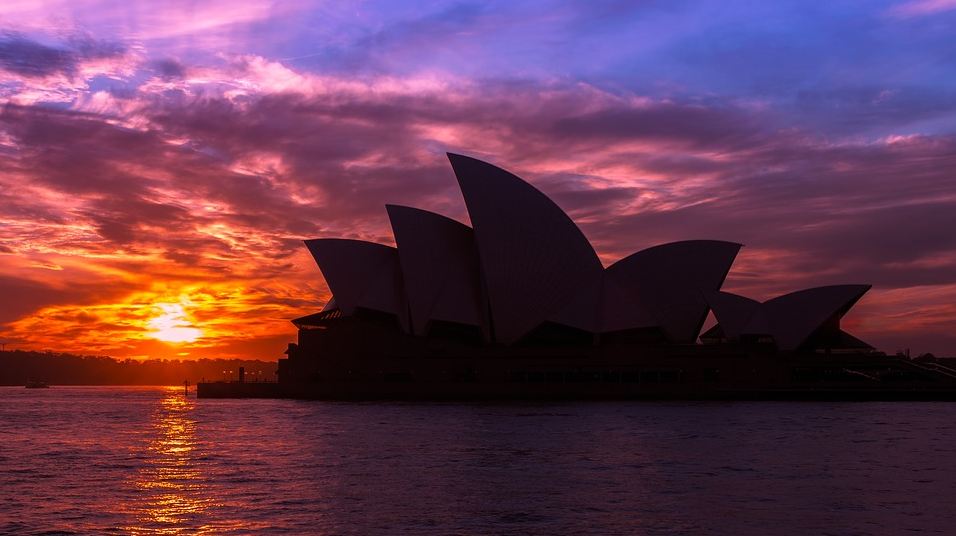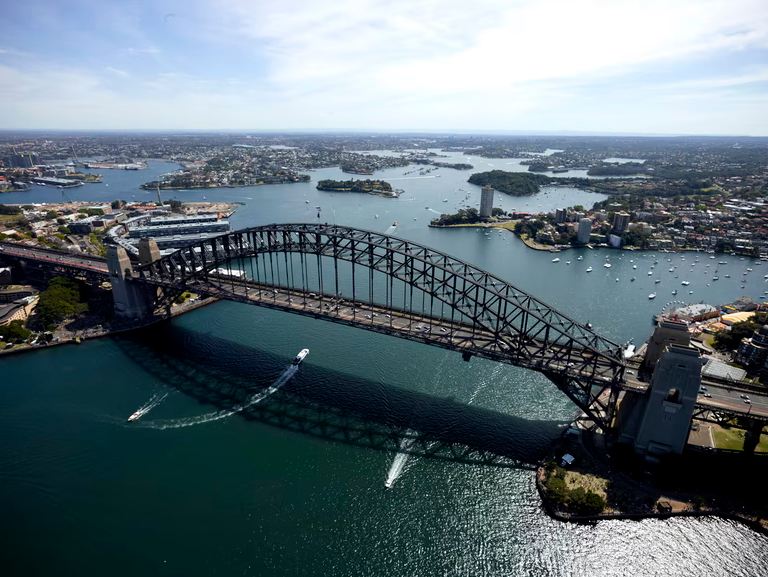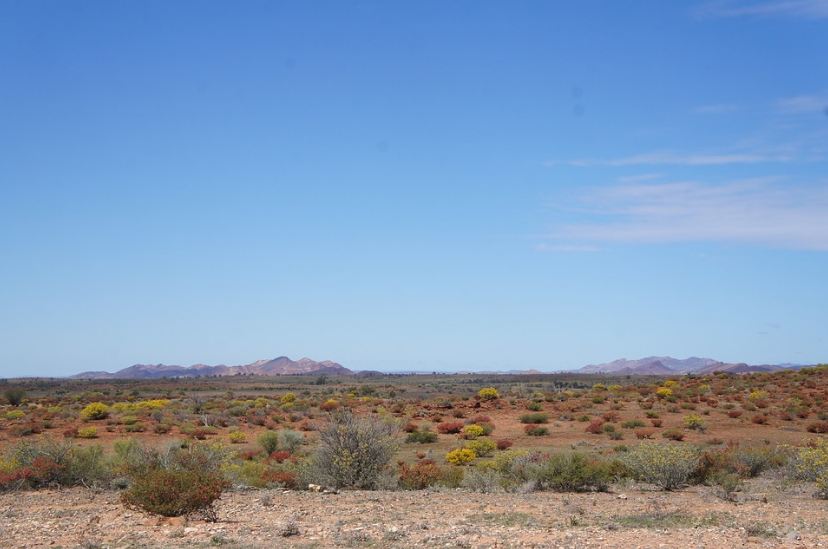How Hot Does It Get in Australia? Summer Temperatures Across the Country

In Australia, you'll experience a wide range of summer temperatures. Northern tropical areas often see temperatures from 25°C to 33°C (77°F to 91°F), while central regions can scorch past 49°C (121°F). Coastal spots like Sydney and Brisbane are milder, staying around 25°C to 30°C (77°F to 86°F), and southern regions like Tasmania offer cooler summer days from 18°C to 24°C (64°F to 75°F). Inland areas can be incredibly hot, frequently exceeding 40°C (104°F). Regardless of your preference for the tropical warmth or a milder coastal vibe, there's much to uncover about Australia's diverse summer climates.
Australia's Diverse Climate Zones
Australia's climate diversity is truly remarkable, showcasing a wide array of climate zones from tropical to plunge. As you navigate the vast continent, you'll encounter everything from the lush tropics of the north to the cooler southern regions. The northern tropical areas, like Darwin, experience summer temperatures ranging from 25°C to 33°C (77°F to 91°F) during the wet season. This climate is perfect if you enjoy warm, humid conditions.
In stark contrast, the central regions of Australia, such as Birdsville, are known for extreme heat. Here, summer can be sweltering, with temperatures soaring past 49°C (121°F), making it one of the hottest spots in the nation. If you're in coastal areas like Sydney and Brisbane, you'll find the summer temperatures more manageable, averaging between 25°C to 29°C (77°F to 84°F), offering a temperate climate that's ideal for beachgoers.
Meanwhile, in the southern parts of Australia, including Tasmania and Victoria, the climate shifts to cooler summer temperatures. Here, you can expect averages between 18°C to 24°C (64°F to 75°F), particularly in alpine zones. This variation showcases Australia's unique climatic tapestry, ensuring there's something for everyone.
Summer Weather in New South Wales
As you move from Australia's diverse climate zones to the specifics of New South Wales, you'll find a fascinating range of summer weather patterns to explore. Summer temperatures here typically vary from 25°C to 40°C (77°F to 104°F), depending on the region. Coastal areas like Sydney enjoy milder conditions, with average highs around 25.7°C (78.3°F) to 26.5°C (79.7°F) and lows from 17.6°C (63.7°F) to 19.6°C (67.3°F). However, inland regions face more intense heat, with western parts experiencing extreme heat events above 40°C (104°F) during the peak of summer.
Humidity levels in coastal areas can contribute to heat stress, so it's crucial to stay hydrated and cool. Rainfall is generally limited, averaging 100-130mm across the summer months, but don't be surprised by occasional thunderstorms, especially in the late afternoons.
Here's a quick overview of summer weather in New South Wales:
- Summer Temperatures: Range from 25°C to 40°C.
- Coastal Areas: Experience milder temperatures and higher humidity.
- Extreme Heat: Common in western inland regions.
- Rainfall: Limited, but thunderstorms can occur.
Staying informed helps you enjoy New South Wales' summer safely.
Queensland's Tropical Heat

Queensland stands out for its intense tropical heat, often boasting some of the hottest summer temperatures in Australia. You'll find that the tropical climate here brings average highs exceeding 30°C (86°F) in coastal cities like Brisbane. This makes for perfect beach weather, but don't forget about the high humidity. As you head further north, places like Cairns offer a balmy range of 17°C (63°F) to 31°C (88°F), ideal for exploring rainforests or lounging by the ocean.
The wet season from November to April drenches the region with significant rainfall, contributing to the sticky, humid atmosphere. Brisbane alone can see average rainfall between 126-172mm during these months. The high humidity can feel overwhelming, but the coastal cities often benefit from invigorating sea breezes that provide some relief from the oppressive heat.
Inland areas aren't as lucky. They can experience extreme heat, as evidenced by the record-breaking 49.5°C (121.1°F) in Birdsville back in December 1972. When visiting Queensland during the summer, prepare for sweltering conditions. Bring plenty of water and stay sun-safe while enjoying the lively landscapes and unique experiences that this tropical region has to offer.
Victoria's Summer Climate
While Queensland is known for its tropical heat, Victoria offers a different summer experience with its warm to hot climate. You'll find that temperatures in Victoria can vary greatly depending on the region. In the coastal areas like Melbourne, the average maximum summer temperatures typically range from 24.3°C to 25.9°C (75.7°F to 78.6°F). The ocean's influence keeps these areas milder, providing some relief from the heat. However, don't be fooled by the coastal charm. Inland regions like the Mallee and upper Wimmera often experience higher average temperatures exceeding 32°C (90°F), making them particularly hotter.
Victoria's summer is also characterized by its unpredictable weather patterns. You might encounter occasional heatwaves that can cause temperatures to spike dramatically. For instance, the hottest recorded temperature was a scorching 48.8°C (119.8°F) in Hopetoun in February 2009. Despite the heat, Victoria generally features lower humidity levels, especially in the north-western parts, where the heat is more intense.
Here's how to enjoy Victoria's summer:
- Discover the cool coastal areas.
- Stay hydrated during heatwaves.
- Visit inland regions for an intense heat experience.
- Enjoy the lower humidity in the north-west.
South Australia's Arid Conditions
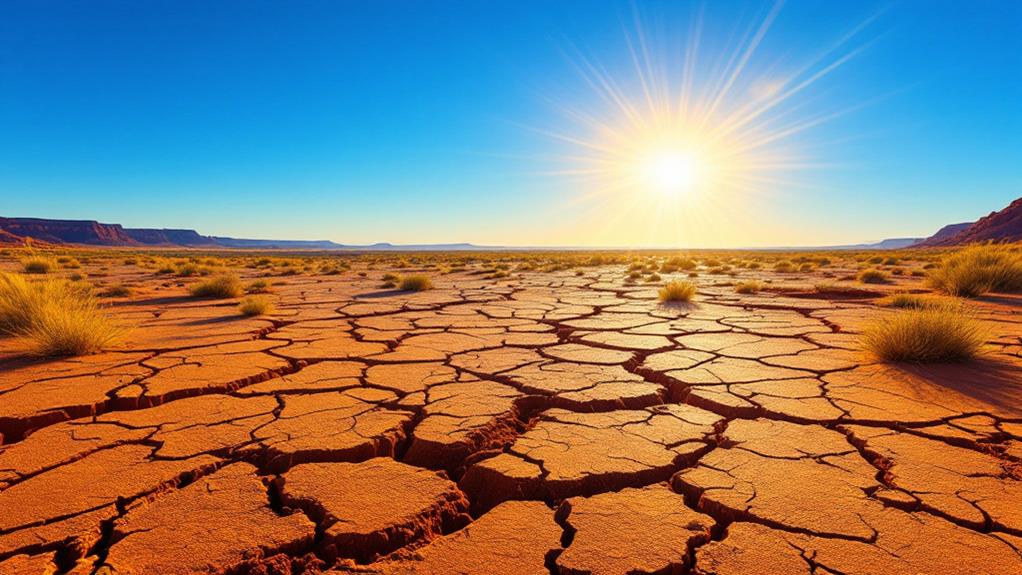
In regard to South Australia's summer, you're in for a dry and intense experience. The summer temperatures typically hover around 28°C (82°F), but expect them to climb over 30°C (86°F) in many areas. The arid conditions of the northern regions are notorious for extreme heat, with temperatures often reaching up to 50°C (122°F). This is where the state's highest recorded temperature was logged at a scorching 50.7°C (123.3°F) in Oodnadatta back in January 1960.
When it comes to average temperatures, you'll find coastal areas offering a bit of a reprieve. The southern coastal regions maintain a milder climate, with average summer temperatures around 32°C (86°F). However, the interior is where the heat truly intensifies, making it a challenge for those unaccustomed to such extreme conditions.
Rainfall is scarce, especially in the Lake Eyre basin, which sees less than 150mm (6 inches) annually. This lack of precipitation further accentuates the arid climate, making South Australia one of the driest areas in the country. Regardless of whether you're exploring coastal areas or venturing into the interior, be prepared for a summer climate defined by relentless heat.
Western Australia's Heatwaves
Western Australia's heatwaves are notorious for their intensity, especially during the summer. Inland regions often bear the brunt of this extreme heat, with temperatures soaring above 40°C (104°F). In fact, the region once witnessed a scorching 50.7°C (123.3°F) at Oodnadatta in January 1960, underscoring the severity of these heatwaves. Coastal areas, such as Perth, might seem a bit more forgiving with summer temperatures ranging from 28°C to 34°C (82°F to 93°F), but don't be fooled—heatwaves can still strike with sudden temperature spikes.
When you're in Western Australia during these heatwaves, keep an eye out for:
- Inland nights: Even after the sun sets, inland regions stay warm, with temperatures often not dipping below 25°C (77°F), making for uncomfortable nights.
- Humidity in the north: The northern areas, like Broome, mix high summer temperatures with high humidity, averaging in the mid to high 30s°C (mid-90s°F).
- Health risks: Prolonged exposure to extreme heat can lead to health issues, so stay hydrated and seek shade.
- Weather updates: Always stay informed about heatwave warnings and plan your activities accordingly.
Tasmania's Cooler Summers
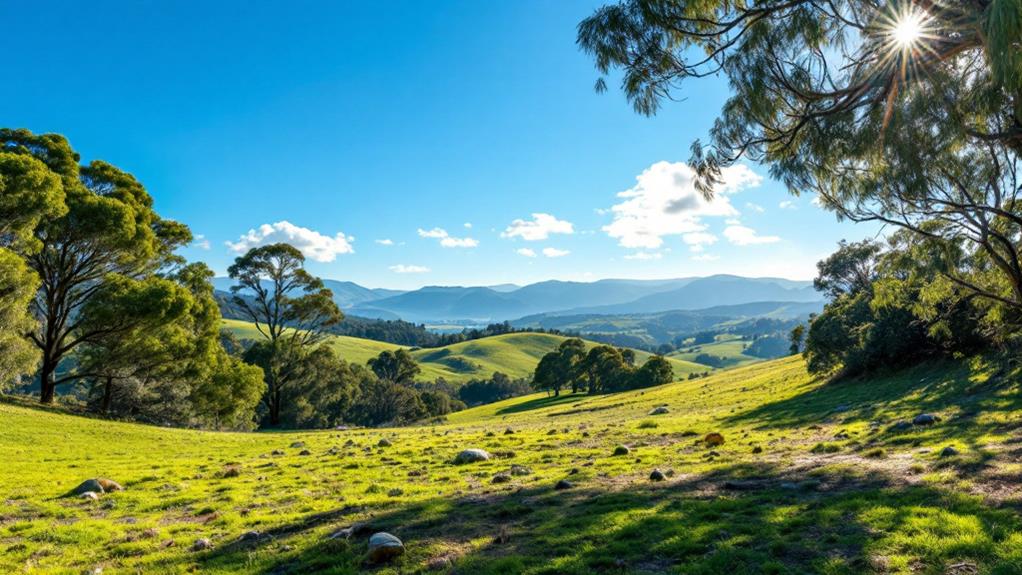
Some might say Tasmania offers a revitalizing escape from the intense summer heat of mainland Australia. You'll find that Tasmania boasts cooler summers, with summer temperatures ranging from 17°C to 23°C (62°F to 73°F) during the warmest months of December to February. While the island did record a high of 42.2°C (108°F) at Scamander in January 2009, such extremes are rare. Coastal areas especially benefit from sea breezes, keeping them pleasantly cooler, whereas the inland regions might feel slightly warmer.
Rainfall plays a significant role in shaping Tasmania's lush landscapes, with average precipitation between 60-80 mm (2.4-3.1 inches) in January. This consistent rainfall guarantees the island remains verdant and inviting. The milder summer climate is perfect for outdoor activities like hiking and exploring the many national parks without the oppressive heat found elsewhere in Australia. Regardless of whether you're wandering through ancient forests or trekking up mountainous trails, the cooler temperatures make your adventures much more enjoyable. So, if you're seeking a summer retreat that combines natural beauty and a more temperate climate, Tasmania could be your ideal destination.
Northern Territory's Intense Heat
Amidst the vast landscapes of the Northern Territory, summer releases its intense heat, presenting both challenges and unique experiences. During the summer months, you'll encounter extreme heat with daytime temperatures ranging from 25°C to 33°C (77°F to 91°F) in the Top End. The temperatures can climb even higher in the southern parts, often exceeding 40°C (104°F) during the day. The highest recorded temperature, a sweltering 48.3°C (118.9°F), was noted at Finke in January 1960.
The Northern Territory's climate varies greatly between the wet and dry seasons. From November to April, the wet season brings soaring humidity levels, making the heat feel more oppressive. Cyclones and heavy rainfall are common, yet the heat remains relentless. In contrast, the dry season from May to October provides a reprieve with slightly cooler temperatures.
To make the most of your Northern Territory experience, consider these tips:
- Stay hydrated: Drink plenty of water to combat the extreme heat.
- Plan activities wisely: Schedule outdoor adventures during cooler parts of the day.
- Embrace the wet season: Enjoy the lively landscapes brought to life by rainfall.
- Respect the sun: Wear sunscreen and protective clothing to avoid sunburn.
Coastal vs. Inland Temperatures
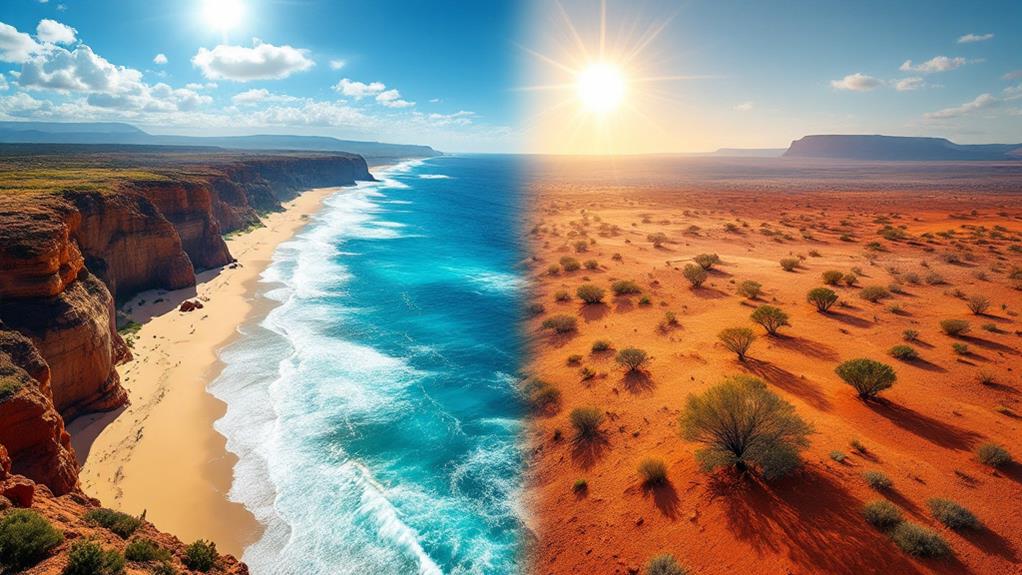
Coastal-inland temperature differences in Australia highlight the diverse climatic conditions you can experience across the country. In coastal areas like Sydney and Brisbane, summer temperatures remain relatively mild, ranging from 25°C to 30°C (77°F to 86°F). This temperate climate is due to the ocean breezes that help moderate the heat. Likewise, Perth's coastal location results in average summer temperatures between 28°C and 32°C (82°F to 89°F).
In contrast, inland regions face extreme summer temperatures. Areas in the Northern Territory and South Australia can see the mercury soar above 40°C (104°F), with some locations even reaching 50°C (122°F). These inland regions lack the cooling influence of the sea, making them considerably hotter. For instance, while Melbourne enjoys coastal summer averages of 24°C to 26°C (75°F to 79°F), nearby inland areas can experience days exceeding 35°C (95°F).
Queensland also showcases this stark contrast. Its coastal regions maintain warm summer temperatures around 29°C to 31°C (84°F to 88°F), yet the inland areas often spike to 40°C (104°F) or higher. These differences in weather patterns emphasize the unique climate variations across Australia.
Weather Patterns and Extremes
Australia's summer weather patterns are marked by a striking range of extremes. In the northern regions, particularly the outback of the Northern Territory, summer temperatures often hit around 40°C (104°F), with nights cooling significantly. Meanwhile, the coastal regions like Queensland's Cairns experience a blend of 17°C (62°F) to 31°C (87°F), marked by rising humidity during the wet season from November to April.
You'll find that extreme summer temperatures aren't just limited to the north. Southern states such as Victoria can see temperatures soar above 48°C (118°F), especially in the Mallee and upper Wimmera regions. However, coastal areas like Adelaide offer some respite with milder summer temperatures averaging around 28°C (82°F), though heat waves can push these figures above 40°C (104°F).
Here's a quick rundown of what you can expect:
- Northern Regions: Extreme heat during the day, cooler nights.
- Coastal Regions: Humid summers with moderate temperatures.
- Southern States: Potential for extreme heat, especially inland.
- Southern Coastal Areas: Generally milder, but not immune to heat waves.
Understanding these weather patterns prepares you better for Australia's diverse summer climate.


